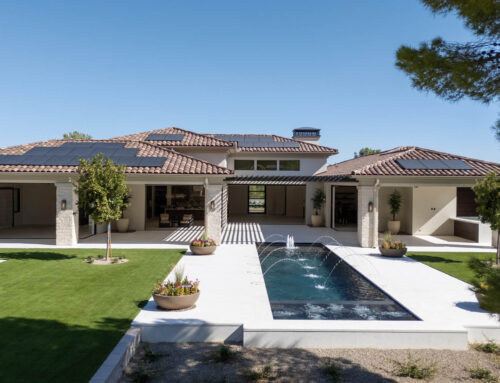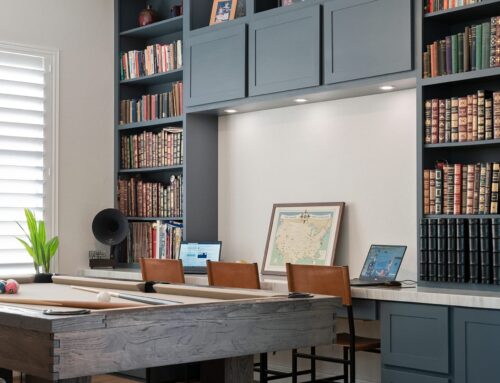Avoid these 8 common pitfalls when planning a whole home remodel
Embarking on a whole home remodel can be an exciting and transformative experience. However, without proper planning and preparation, it can quickly turn into a nightmare. To ensure a successful renovation project, it’s essential to avoid these eight common pitfalls that homeowners often encounter.
Understanding the Basics of Home Remodeling
Before diving into the potential pitfalls, it’s important to have a firm grasp of the basic principles of home remodeling. Whether you’re adding an extension, renovating an existing space, or completely redesigning your home, having a clear understanding of the process is crucial.
Home remodeling is not just about changing the physical appearance of a space; it’s about transforming the way you live. It involves creating a harmonious blend of functionality, aesthetics, and comfort to suit your lifestyle and needs. By embarking on a remodeling journey, you have the opportunity to breathe new life into your home and make it a true reflection of your personality.
The Importance of a Solid Plan
The first step in any successful remodeling project is creating a solid plan. This plan should outline your goals, establish a budget, and specify the timeline for completion. Without a well-thought-out plan, you run the risk of encountering various complications along the way.
Furthermore, a detailed plan serves as a roadmap for your project, guiding you through each phase of the remodeling process. It allows you to visualize the end result and make informed decisions along the way, ensuring that every aspect of your home renovation is carefully thought out and executed.
Key Elements in Home Remodeling
When planning your home remodel, it’s important to consider several key elements. These include the layout, functionality, aesthetics, and overall flow of the space. By carefully evaluating these elements, you can avoid potential pitfalls and ensure a harmonious design.
Each element plays a crucial role in the success of your remodeling project. The layout determines how the space will be utilized, the functionality ensures that it meets your practical needs, the aesthetics create a visually appealing environment, and the flow ties everything together seamlessly. By paying attention to these key elements, you can create a home that not only looks stunning but also functions effortlessly to enhance your daily life.
Pitfall 1: Underestimating the Budget
One of the most common pitfalls in home remodeling is underestimating the budget. Many homeowners fail to account for unexpected costs that may arise during the project. It’s crucial to conduct thorough research and consult with professionals to get an accurate estimate of the total cost.

When embarking on a home remodeling project, it’s important to remember that costs can quickly add up. Factors such as the quality of materials, labor fees, and any necessary permits can significantly impact the overall budget. By creating a detailed budget plan and factoring in all potential expenses, you can better prepare for the financial investment required.
The Hidden Costs of Remodeling
Remodeling projects often come with hidden costs that are easy to overlook. These can include structural repairs, electrical and plumbing upgrades, or unforeseen issues that arise during construction. By accounting for these potential expenses upfront, you can avoid financial strain later on.
Additionally, it’s essential to consider the long-term implications of your remodeling choices. Opting for cheaper materials or taking shortcuts to save money upfront may result in higher maintenance costs down the line. Investing in quality materials and workmanship can lead to a more durable and aesthetically pleasing outcome, ultimately saving you money in the long run.
How to Accurately Estimate Costs
To accurately estimate costs, it’s essential to gather multiple quotes from contractors and suppliers. Additionally, consider including a contingency fund in your budget to cover any unexpected expenses that may arise during the project. Being prepared financially will help you navigate the remodeling process smoothly.
Furthermore, don’t forget to factor in the cost of permits and inspections. Compliance with building codes and regulations is crucial for the success of your project and can incur additional expenses. By working with professionals who are knowledgeable about local requirements, you can ensure that your remodeling project is not only aesthetically pleasing but also legally sound.
Pitfall 2: Overlooking Necessary Permits
Another pitfall to avoid is overlooking necessary permits for your remodeling project. Failing to obtain the required permits can result in fines, delays, or even having to undo completed work.
The Role of Permits in Remodeling
Permits are put in place to ensure that the remodeling work meets building codes and regulations. They ensure that the project is safe, structurally sound, and in compliance with local laws. Skipping this crucial step can lead to significant setbacks.
Moreover, obtaining permits can also provide you with an opportunity to have your project reviewed by professionals who can offer valuable insights and suggestions. This can help you avoid potential pitfalls and ensure that your remodeling project is executed smoothly and efficiently.
Securing the Right Permits
Securing the necessary permits for your remodel is a process that varies depending on your location and the scope of the project. It’s important to research the permit requirements in your area and work closely with your contractor to ensure all necessary permits are obtained before starting any work.
Additionally, some permits may have specific requirements or conditions that need to be met during the remodeling process. Understanding these conditions and incorporating them into your project plan can help you avoid complications or delays down the line. Communication with local authorities and double-checking all permit details are crucial steps in ensuring a successful remodeling project.
Pitfall 3: Ignoring the Home’s Original Architecture
When undertaking a whole home remodel, it’s crucial to respect and consider the home’s original architecture. Ignoring the original design can result in a disjointed and unappealing final product.

One key aspect to keep in mind when preserving a home’s original architecture is the significance of historical elements. These elements can range from intricate moldings and trim work to unique window styles and door designs. By paying attention to these details and incorporating them thoughtfully into the remodel, you can honor the craftsmanship and artistry of the past while breathing new life into the space.
Respecting Your Home’s History
Every home has a unique history and architectural style that deserves to be preserved and celebrated. Incorporating elements of the original design into your remodel not only maintains the home’s character but also adds value to the property.
Furthermore, understanding the historical context in which your home was built can provide valuable insights into the architectural choices made by the original builders. Whether it’s a Victorian-era mansion or a mid-century modern gem, each architectural style reflects the trends and influences of its time. By delving into the history of your home’s architecture, you can make more informed decisions during the remodel process, ensuring that the essence of the original design is honored.
Balancing Old and New Designs
Finding the right balance between the old and new is essential in creating a cohesive and visually pleasing outcome. By blending modern features with the home’s original architecture, you can achieve a harmonious design that respects both the past and the present.
Integrating contemporary amenities and technologies into a historically significant home requires a delicate touch. Careful consideration should be given to how these modern elements can coexist with the traditional features of the house without compromising its integrity. From smart home systems discreetly integrated into period interiors to energy-efficient upgrades that complement the original design, striking the perfect balance between old and new is key to a successful whole home remodel.
Pitfall 4: Choosing the Wrong Contractor
Perhaps one of the most significant pitfalls in home remodeling is selecting the wrong contractor for the job. A reliable and experienced contractor is crucial for the success of your project.

The Importance of a Reliable Contractor
A reliable contractor ensures that the remodeling project is executed efficiently, on time, and within budget. They possess the necessary skills and expertise to handle the complexities of your remodel and can provide valuable guidance throughout the process.
Moreover, a reliable contractor will have a network of trusted subcontractors and suppliers, ensuring that the materials used in your remodel are of high quality. They will also have a solid understanding of local building codes and regulations, preventing any potential legal issues during the construction process.
Tips for Selecting a Contractor
When selecting a contractor for your remodel, it’s important to do thorough research, seek recommendations, and request previous work samples. Additionally, always ask for a detailed contract that outlines all aspects of the project, including costs, timelines, and warranties.
It is also beneficial to interview multiple contractors to compare their approaches, communication styles, and overall compatibility with your vision for the project. Remember, communication is key in any successful remodeling project, so choose a contractor who listens to your ideas and concerns.
By avoiding these eight common pitfalls, your whole home remodel can be an enjoyable and successful endeavor. With careful planning, attention to detail, and the right team of professionals, you can transform your home into the space of your dreams.
































